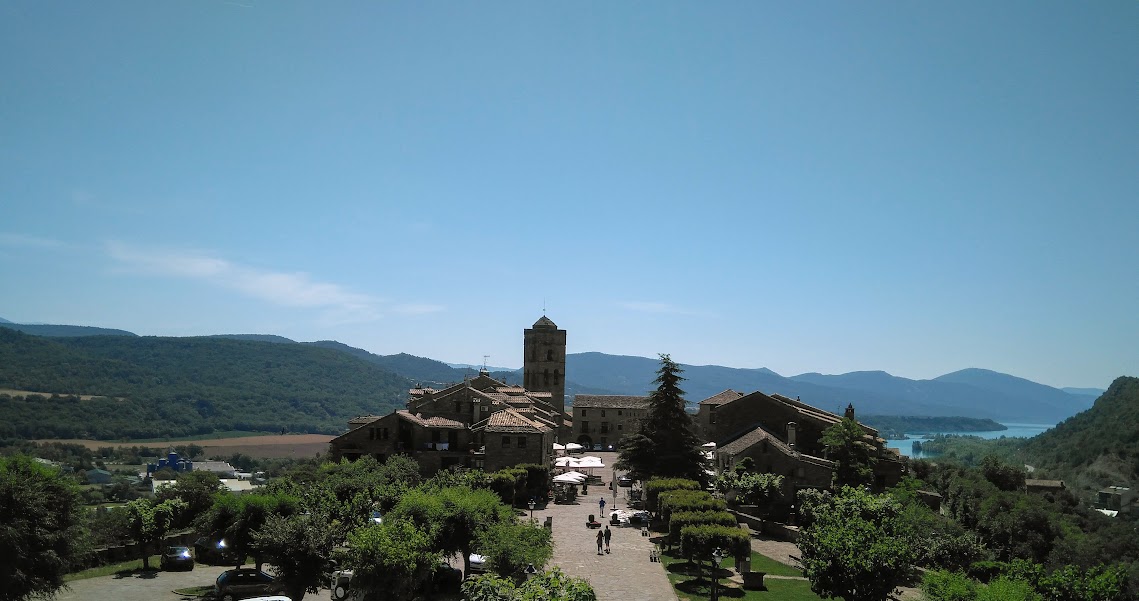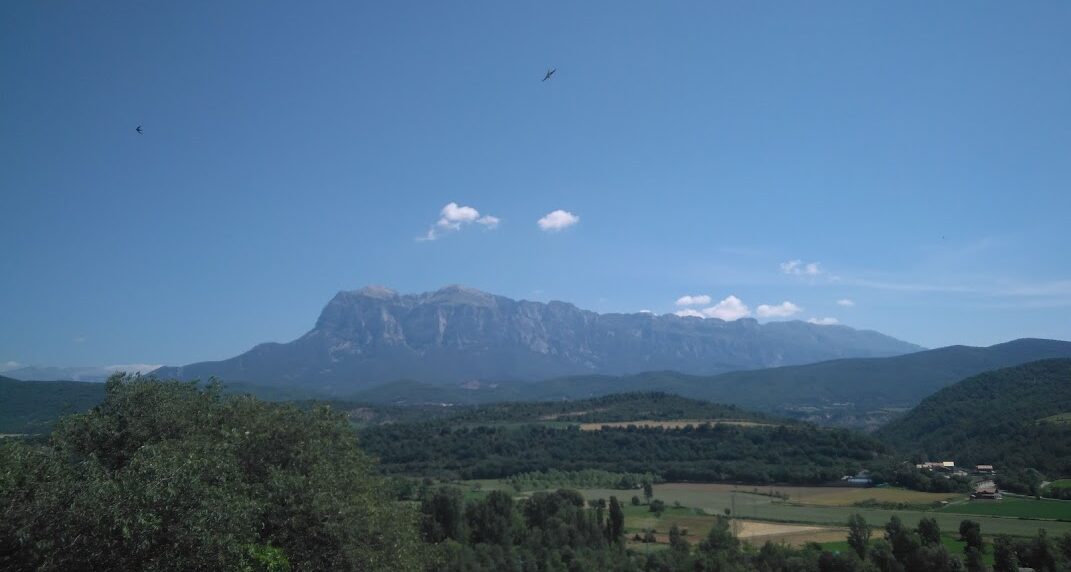Trail name and description
- Ainsa, Huesca
- N 42° 24' 54.708'' E 0° 8' 25.231''
Level & Scale of difficulty used for hiking
E (For more info have a look here)
Duration
4.40 hours
Distance
14,13 km
Refreshing points
None
Shelters
Guaso esconjuraderos
Best period for hiking
All year long it is possible to hike with the best period being from late June to mid-September
Climate
In Ainsa, summers are hot, dry and mostly clear and winters are very cold and partly cloudy. During the course of the year, the temperature generally varies from 1 °C to 27 °C and rarely drops below -4 °C or rises above 31 °C
how to reach the starting point
From Huesca take the A-22 to Barbastro and then the A-138 to Ainsa. Very close to the public car park there is a track, initially asphalted, look for signs indicating the hermitage of the Virgen de los Palacios
Equipment and outfit required
a bottle of water, as it is not always possible to stock up on water on the way, a hat, windbreaker, whatever you consider indispensable on a personal level, remembering not to make the rucksack unnecessarily heavy, hiking footwear.


The legend of the Cross of Sobrarbe tells that in the year 724, King Garcí Ximénez conquered the village from the Muslims thanks to the strength given to him by the appearance of a fiery cross on top of a holm oak.
Despite the fact that many historians doubt its veracity, it is still remembered with the celebration of La Morisma every two years.
The castle of Aínsa dates back to the 11th century. It formed part of the line of defence of the Christian territories (a line that extended as far as Abizanda), and became the embryo of the town, which in the Middle Ages was walled, and became the capital of the county of Sobrarbe, which belonged to the kingdom of Aragon
Guaso esconjuraderos. The esconjuraderos are a characteristic element of Pyrenean culture and traditions. Mountain society dealt with aspects of the weather with the same superstition and practices as in other aspects of daily life. These were an important space from which the priest and the population invoked to divert or undo the storms or thunderstorms that could spoil the fields and crops. This is why these buildings are located at points where there is a wide panoramic view of the horizon.
- Ainsa castle
- Santa Maria Church
- Ainsa Plaza Mayor
- Viewpoint over a vulture feeding ground
- Hermitage of the Virgen de los Palacios
- Guaso Church
- Guaso esconjuraderos
- Ena river
- Ara river
Casa Alfonso
The traditional cuisine is marked by its location in the heart of the Huesca Pyrenees, with hearty dishes that help to withstand the low winter temperatures. Beef, pork and lamb are the most popular, although you can also find dishes made with game meat.
The Ainsa castle houses the fauna eco-museum which is dedicated to the bearded vulture, a bird that is in danger of extinction.
On the outskirts of Aínsa is the vulture feeding ground, a space reserved for the feeding of the vultures that roam the area. The remains of the carcasses of the meat companies in the area are thrown there, and the vultures are in charge of disposing of them in an ecological way that is not harmful to the environment.
One of the curiosities of the houses in the old part of Aínsa are the doorknobs. Many of them have a phallic shape, like an amulet, with the intention of attracting fertility to the house.
Rafting is one of the best sports activities you can do in Ainsa, as it has two perfect rivers for it. On the one hand the Ara, and on the other hand the Cinca, two mountainous rivers with a confluence in Ainsa.
useful links http://www.doatrip.com/es/europa/espana/ainsa/curiosidades/index.php#top-content